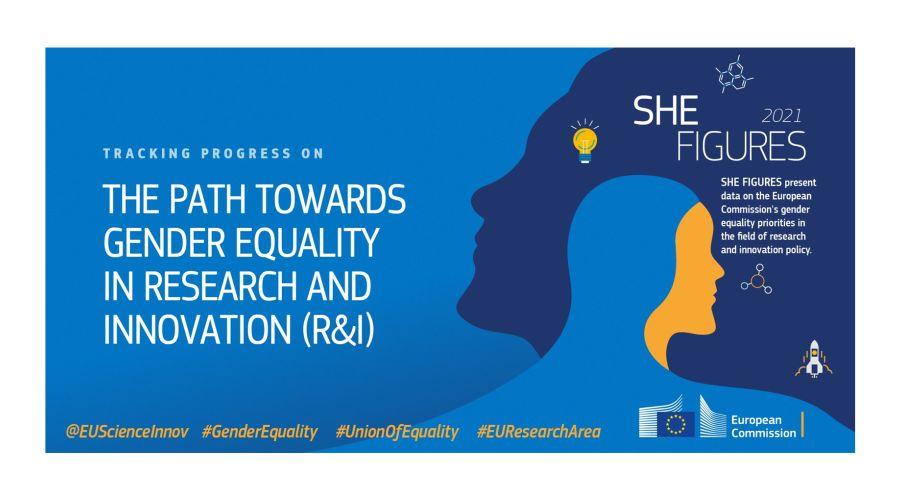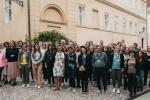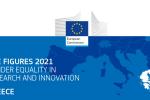
The European Commission's (EU) new edition of 'She Figures 2021'- 'The Path to Gender Equality in Research and Innovation', to be published in autumn 2021, focuses on the gap and bridging that gap between men and women in academia and the labour market. A new infographic presents a selection of results from the forthcoming She Figures 2021 publication.
Some of the points that stand out include the following:
- Although the gap between women and men in doctoral degrees has narrowed (women make up 48%), women's under-representation in technology (ICT) professions remains, with women making up only 24.9% of self-employed professionals.
- Women continue to be under-represented in senior academic positions (accounting for 42.3% of the academic staff, with 26.2% corresponding to Tier 1 academic positions), as well as in key decision-making positions (23, 6% of heads of HEIs).
- Women remain less successful than men in securing research funding (-3.9%) and the percentage of women patent holders remains low (10.7%)
It is important to note that the National Documentation Centre (EKT), as the National Authority of the Hellenic Statistical System, collects data to capture the Greek system of Research, Technology, Development, Innovation (RDI), and in this context has included statistics on women's participation in R&D in the list of national statistics it publishes. The data it generates are embedded in the databases of the European Statistical System and are used by international organisations such as the OECD and the EU for analysis and comparisons at European and international level.
EKT is also the statistical representative of the country for the EU 'She Figures' publication contributing to the shaping of new editions, including the 2021 edition, and integrating data on the participation of women in research, development and innovation at national level.
At the same time, through its participation in the European project GENDERACTION, EKT contributes to strengthening the participation of women in R&D and the integration of the gender dimension in research and the Horizon Europe programme. GENDERACTION has published a Policy Brief on the regulations for participation in the Horizon Europe programme that takes into account the gender dimension, and a Position Paper on the joint planning of the Horizon Europe programme for the 1st Strategic Plan for t he 2021-2024 period. These texts call for action through the elaboration of a series of recommendations for the proper integration of gender equality policies into the participation regulations of Horizon Europe.
Gender equality in Horizon Europe
Since the European Commission's first Announcement on gender equality in the European Research Area (ERA) in 2012, gender equality has been gradually strengthened as a priority. In 2020, a new commitment to gender equality in research and innovation was integrated into various measures and initiatives.
The main instrument for achieving the objectives of the ERA is 'Horizon Europe (2021-2027)', the R&D Framework Programme, which sets gender equality as a horizontal priority with a view to eliminating inequalities in research systems and innovation. The specific eligibility criteria of the new programme for achieving gender equality are:
- New eligibility criteria for access to finance that includes a Gender Equality Plan /GEP).
- The integration of the gender dimension (sex and / or gender analysis) in the content of the research project is now by definition a requirement.
- The balanced participation of the sexes in the research teams of the submitted proposals is one of the ranking criteria in the event of a tie.
The European Commission's 'She Figures' publication, first published in 2003 and updated every three years thereafter, monitors the situation of gender equality in R&D with comparable pan-European data. The data follows the 'chronological journey' of women from the completion of doctoral studies to their participation in the labour market and the acquisition of high-ranking roles, while exploring the differences in the working conditions of women and men in the field of research and innovation.















